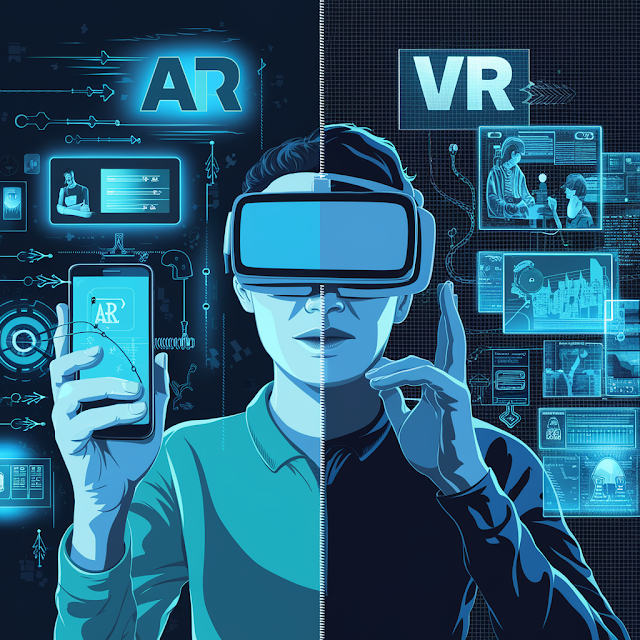What is The Primary Difference Between Augmented Reality (AR) And Virtual Reality (VR)?
The primary difference between augmented reality (AR) and virtual reality (VR) lies in their respective approaches to blending the digital and physical worlds.
1. Virtual Reality (VR): immerses users entirely in a simulated environment, shutting out the physical world. Users wear VR headsets that block their view of the real world and replace it with a computer-generated environment. VR aims to create a completely synthetic experience where users feel as though they're present in a different reality.
2. Augmented Reality (AR): overlays digital content onto the real world, enhancing the physical environment rather than replacing it entirely. AR technology adds digital elements—such as images, videos, or 3D models—onto the user's view of the real world. Users can still see and interact with the physical environment while AR enhances it with additional information or digital objects.
In essence, VR aims to create a fully immersive, artificial reality, while AR enhances the real world with digital elements, offering a blend of the virtual and physical realms.
Here are some additional points differentiating augmented reality (AR) from virtual reality (VR):
1. User Experience and Interaction: In VR, users typically interact with the virtual environment through specialized controllers or gestures within the virtual space. Their physical movements can be translated into actions within the simulated world. In contrast, AR often relies on more natural interfaces, such as smartphones, tablets, or specialized AR glasses, where users interact with digital content overlaid onto the real world.
2. Applications and Use Cases: VR is often used for immersive experiences such as gaming, simulations, training, and virtual tours. It's particularly effective when complete immersion and isolation from the physical world are desirable. AR, on the other hand, finds applications in various fields such as education, retail, navigation, maintenance, and healthcare, where enhancing real-world experiences with additional digital information is valuable.
3. Level of Immersion: VR typically provides a higher level of immersion compared to AR because it fully replaces the user's view with a virtual environment. This immersion can be highly effective for creating realistic simulations and experiences. AR, while enhancing the real world with digital elements, still allows users to maintain awareness of their physical surroundings, making it suitable for applications where situational awareness is important.
4. Hardware Requirements: VR often requires specialized hardware such as VR headsets with built-in displays, motion sensors, and powerful computing devices to create and render the virtual environments in real-time. AR can be experienced on a wider range of devices, including smartphones, tablets, and AR glasses, which overlay digital content onto the user's view of the real world.
5. Social Interaction: VR experiences can be isolating because users are fully immersed in the virtual environment, making it challenging for social interaction unless specifically designed for multiplayer experiences. AR, on the other hand, allows users to share their augmented view of the world with others, enabling social interaction and collaboration in both physical and digital spaces.
Understanding these differences can help determine the most suitable technology for specific applications and experiences, whether it's creating immersive virtual environments or enhancing real-world interactions with digital content.


Post a Comment